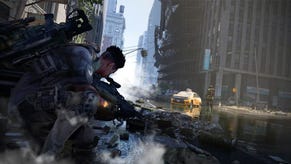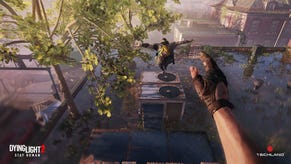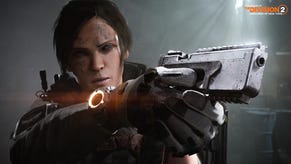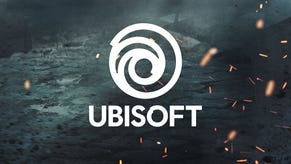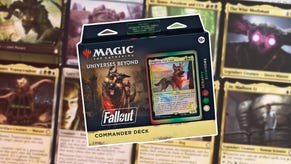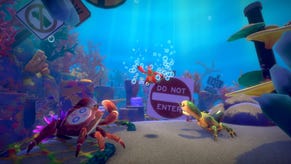The Division 2 PvP Preview: Three Dark Zones, Gear Normalization, and the Endgame Occupied DZ
Not only is Ubisoft trying to make the Dark Zone better, it's making more of them.
This article first appeared on USgamer, a partner publication of VG247. Some content, such as this article, has been migrated to VG247 for posterity after USgamer's closure - but it has not been edited or further vetted by the VG247 team.
When Tom Clancy's The Division launched back in March of 2016, the focus of the game was clearly on the cooperative online. Players took on the role of agents in the fictional Strategic Homeland Division, following a worldwide viral outbreak. Alone or with friends, you set out into the snowy wilderness of a ruined New York to help bring it back from its descent into anarchy.
Most of The Division's Manhattan map was given over to player vs. environment (PvE) play, while player vs. player (PvP) combat was relegated to a single region: The Dark Zone. You would dive into this no man's land fighting against other players for survival and the best loot. Once you picked up any loot, you still had to extract it to fully take control, and the extraction process was like painting a giant bullseye on you and your team. The Dark Zone started as a free-for-all experience: kill or be killed, with the most geared players taking the prize.
Eventually, Ubisoft added more structure to the Dark Zone with Supply Drops, World Tiers, Contamination Events, and more. Despite the additions, The Division's PvP couldn't escape those poor first impressions that the Dark Zone was a region of griefers, and structured PvP simply a band-aid. With The Division 2, Ubisoft is prepared to finally deliver a more robust PvP experience at launch.
The Division 2 is moving away from Manhattan in the Winter, taking place seven months after the first game in Washington, D.C. In D.C., the outbreak hit hard, but civilians and raiders are beginning to find a new sort of normalcy. Landmarks are overgrown with plant life in some regions, while others were reclaimed by swamps. With the new map, Ubisoft has rethought things and is giving PvP an equal focus to PvE.
"We were very fortunate that PvP was a main pillar of development this time around. As a studio who's always prided itself on PvP, it hurt us inside that we couldn't make custom maps for the original game. Being able to do that this time, [we were able to] really agonize and massage those maps to have the sightlines and flow that we want. When I think about a great PvP experience, I think about a multitude of options and now we have a place to put all of those options in post-launch," says The Division 2 creative director Terry Spier in an interview with USG.
While The Division had a single Dark Zone region in the center of the map, The Division 2 will offer three Dark Zones. They're located at the corners of The Division 2's downtown DC map, and each Dark Zone is meant to provide players with visual and gameplay variety. Each one is also preceded by an introductory PvE mission, which is there to acclimate the player in the environment and explain that region's story. This will also give PvE-only players a chance to explore the landmarks of each region safely, before the real Dark Zone begins.
Dark Zone East is located at the Capital Train Station, where the military set up shop originally. This region is made with open sightlines for long-range play. Dark Zone South is at the DC Waterfront, which has seen the most overgrowth and new life. It's comprised of a large interior space with a lot of close combat, acting as an indoor jungle. Finally, Dark Zone West takes place in the formerly affluent area of Georgetown, and the lifeless alleys give themselves over to medium-range combat.
"We've been very sensitive to the level design in each one. The biomes were so important because the stories were so important for us. That's not to say that Dark Zone South, with its heavy interiors, still can't support long-range gameplay. It's just more likely that a long-range shooter will have more success in Dark Zone East," says Spier.

The new Dark Zones will also split the difference between cooperative and competitive play, offering PvEvP. Rogue Status, which marked players that killed others within the Dark Zone in the first game, now has new status levels focused around non-PVP actions, like stealing and looting. By adding more PvE play and better loot to the Dark Zone, Ubisoft hopes that PvE players might be more willing to engage in these primarily PvP regions.
"The Rogue loop was limited in the original game. I love being a bad guy, but nobody can be a bad guy without PvP in the original game. Yeah, the hope is that we introduce more PvE players into the [Dark Zone] and they find out they like PvP a little bit. And if I'm being super honest with you, the PvPers need people to hunt," Spier tells us.
The new Rogue loop has several levels. At the lowest level, if you run into a lockbox and you don't have a key to open it, you can choose to break the lock. Alternatively, you can take the entire contents of a Supply Drop for yourself. Either action will mark you Rogue at the lowest level, making you vulnerable to PvP combat. But on the other hand, it opens up Rogue rewards like a Dark Zone vendor. Killing any other player sends you up to the Disavowed level, and if you keep your killing spree going, you'll eventually be flagged as Manhunt. Players engaged in hostile actions will blip on the map, showing their location to others.
Spier notes that the gates at each Dark Zone gate now have automated turrets that will cut down players at the higher levels of Rogue Status. "Checkpoint camping was a big challenge that we faced in the original game, so we've added turrets at each gate that will target and eliminate any Rogue player when they get too close. I watched a lot of players that were experimenting with Rogue gameplay get crushed, so I'd definitely like to improve some signs and feedback there," he says. Rampant murderers beware!
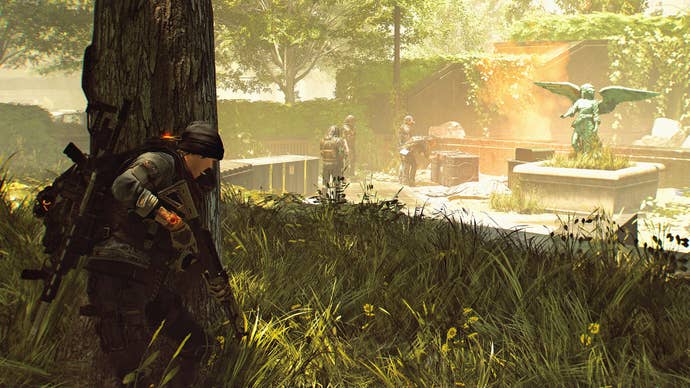
I admit that I only played the Dark Zone twice in my time with the first Division, for the reasons Spier lists above. I just have little interest in free-for-all PvP outside of the more structured play of something deathmatch or battle royale. Going deep into the Dark Zone and gaining some potentially cool loot was immediately undercut by the knowledge that a team was camping one of the extraction checkpoints. The new Dark Zone retains the atmosphere of the original, especially in team play, because you never know when one of your own will undertake a Rogue action. Despite that, the ability to enjoy PvE in the Dark Zone region-Dark Zone East for our demo-and flip over whenever you want presents options. Maybe it's because my demo character wasn't my character, but I actually enjoyed hunting down Disavowed and Manhunt players.
Dark Zone PvP features a host of other improvements outside of the structure. Voice chat will become disabled automatically if you get into a fight with hostile players, preventing the angry and toxic commentary that could escalate quickly. Anti-cheat has been improved, and the client-server architecture has been shifted towards server side, preventing some client-side tampering. The overall server counts have also increased on Ubisoft's side.
Normalization is also a part of the Dark Zone this time around. Ubisoft understands that the move might be controversial to parts of the community, but the developers felt that excessive progression impacted a sense of fair play in the first The Division. Someone who's been playing the game longer should be stronger, but not so strong that the fight is over at the moment of engagement. Build choices will remain, but gear stats will be normalized based on World Tier, and the effects of normalization will be readily apparent in your character menu.

"So let's just say for example-and this is just an example-we normalize to World Tier 2. If you were above World Tier 2, getting gear at World Tier 4, you're going to be more powerful than a person who comes in at World Tier 1 and gets normalized. So you will have a statistical advantage, albeit minute, but it's present. So that's been our approach," says Spier. "I'll be honest, it's been a challenge. I think the end result is worth it, being able to make sure that players feel like they're on an even playing field. We're still working on the numbers of course, and I'm sure we'll continue to work on these numbers in post-launch."
Ubisoft hasn't forgotten about hardcore PvP players, those folks who revel in the digital Lord of the Flies that was the original Dark Zone. At endgame, one of the Dark Zones will become the all-new Occupied Dark Zone. Within the Occupied DZ, the free-for-all play is back. Normalization is gone, friendly fire is on again. And all the additional status bars and location markers in the lower Dark Zone? Those are gone too.
"That group of people that want that lawlessness was large enough for us to devote resources to give them a place for that top-tier Dark Zone challenge, both from a PvP standpoint and a PvE standpoint. We really ratchet everything up in the Occupied Dark Zone. So if you want the ultimate challenge, this is the place for you. And I understand it's not going to be for everyone, but we really want to cater to the audience that was first drawn to the temptation of the Dark Zone," says Spier.
The handling of Contaminated loot has changed for the Occupied Dark Zone. First, it's rarer than it was in The Division. Second, instead of rolling the stats on Contaminated loot when you pick it up, they're instead rolled upon extraction. That allows the developer to ensure that gear stats are tailored to the player getting the item. Contaminated loot from a normal Dark Zone offers stats within a certain range, while the benefit of Occupied DZ gear is that range is smaller.
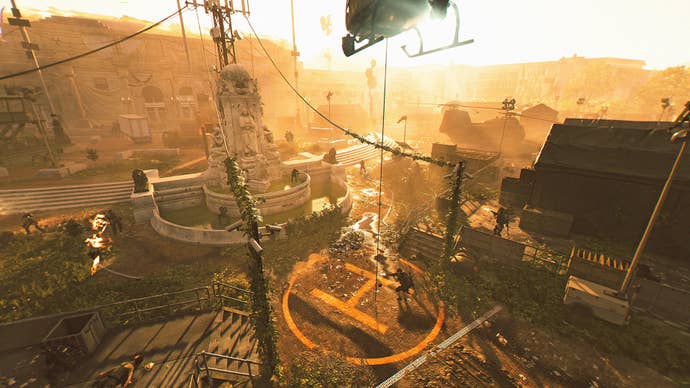
With the new Dark Zones and their locations on the map, Ubisoft also has room to expand them in the future. Dark Zones South, East, and West might look completely different two years down the line because Ubisoft has planned ahead. Spier is cagey about committing to what those expansions might look like though.
"I don't know what's in the cards. If I'm just exploring that space with you, I think that's one of the benefits of placing each Dark Zone in the corners of the map. It was very difficult to expand [The Dark Zone] in the original game because it was smack dab in the middle. All we could do is go north. We were surrounded by mission content on all sides. In this case, if we were going to expand it, we have a much easier time because we have areas that aren't consumed by other content. I think the players will dictate if we decide to expand," he explains.
There's a stronger focus on PvP play from Ubisoft, including the improved Dark Zone and more structured PVP modes, leading to something that feels a bit less like an afterthought. I came out of my demo experience actually looking forward to PvP, meaning the sequel is ahead of the original. The Division 2 is already putting forth a more thoughtful approach to the Dark Zone, and I'm looking forward to that approach reaching the community.



